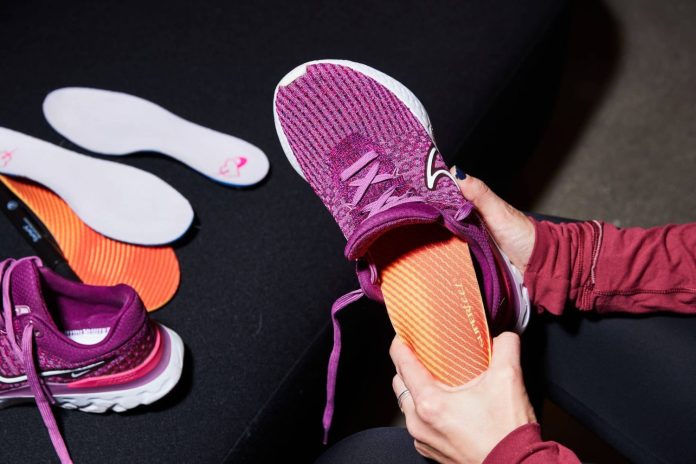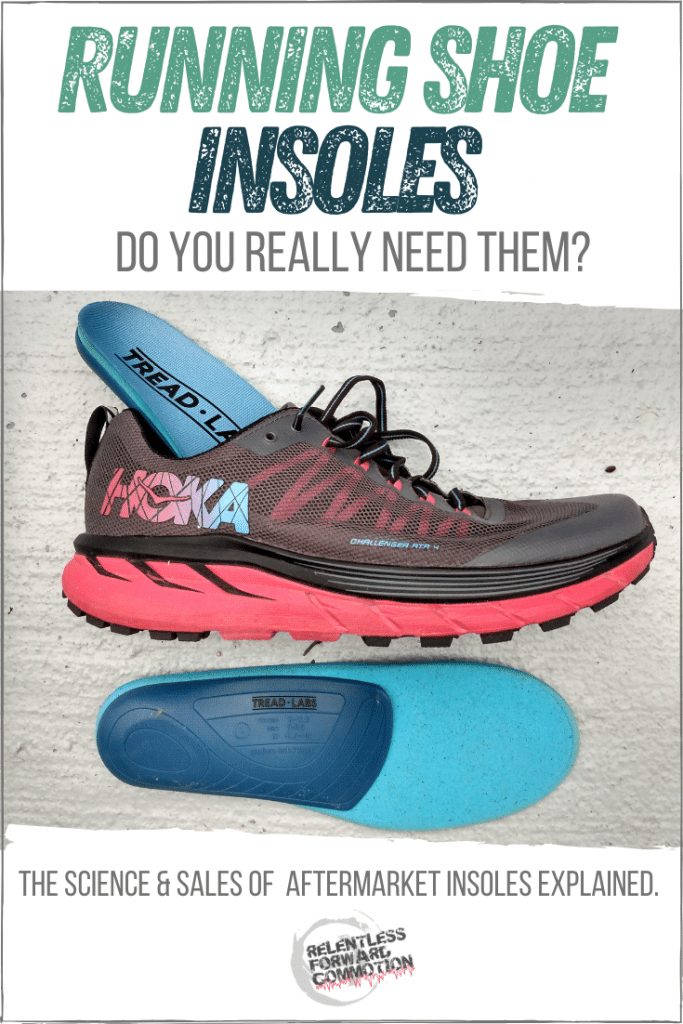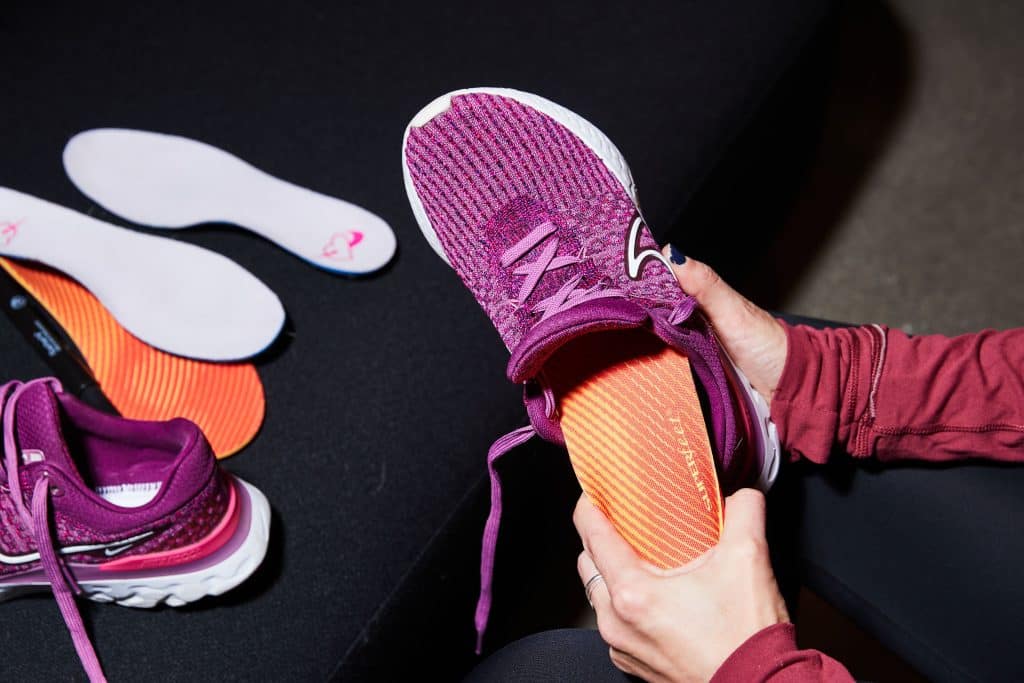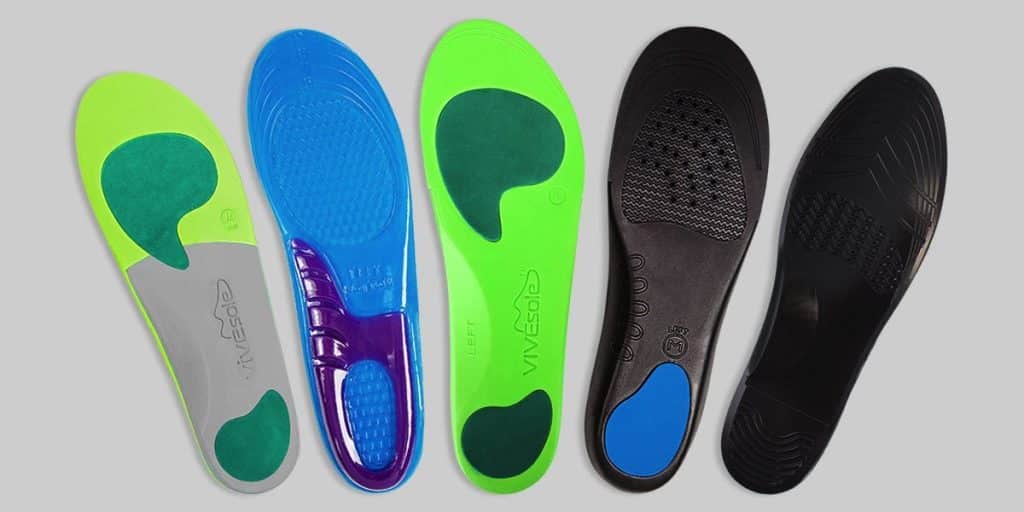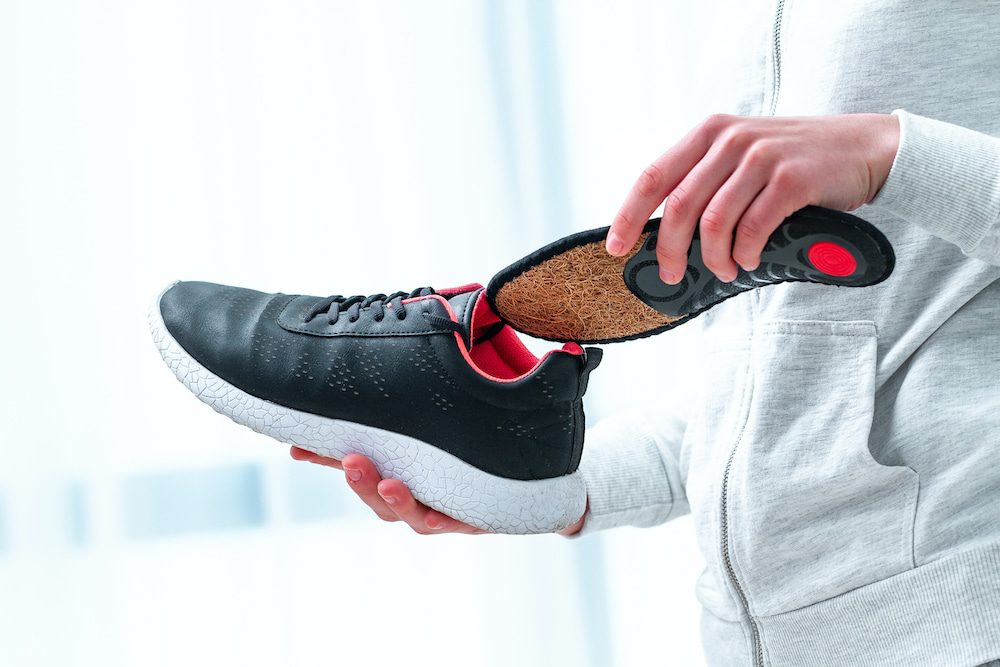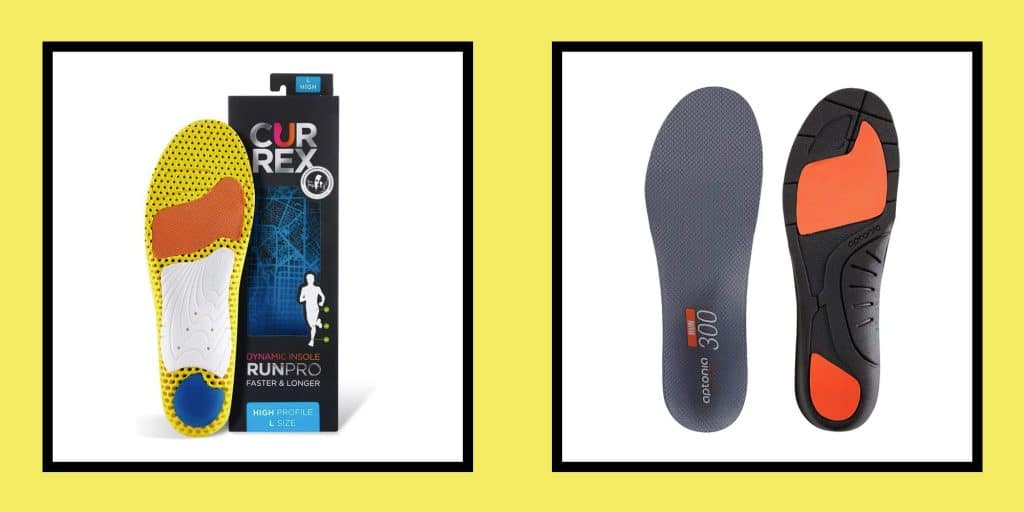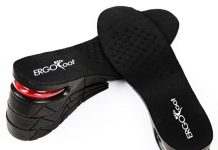You may have wondered whether using orthotic insoles with your running shoes is possible.
The answer is yes! Incorporating orthotic insoles into your running routine can provide numerous benefits, including increased comfort, improved stability, and enhanced performance.
By providing additional support and cushioning, orthotic insoles can help alleviate common foot problems and prevent injuries.
Whether a professional athlete or a casual jogger, adding orthotic insoles to your running shoes can make a noticeable difference in your overall running experience.
So, don’t hesitate to try them and start enjoying the benefits today.
What are Orthotic Insoles?
Definition
Orthotic insoles, or orthotics, are specialized inserts placed inside your shoes to provide additional support, stability, and proper alignment for your feet. These insoles are designed to address various foot conditions and biomechanical issues that may be causing pain or discomfort. They can be particularly beneficial for runners who put significant stress on their feet during physical activities.
Types of Orthotic Insoles
There are two main types of orthotic insoles: custom orthotic insoles and prefabricated orthotic insoles.
Custom orthotic insoles are tailored to the individual’s unique foot shape and biomechanics. They are typically prescribed by a podiatrist or foot specialist after a comprehensive assessment and analysis of your feet. These insoles are made based on a detailed mold or scan of your feet and provide personalized support and correction for your needs.
On the other hand, prefabricated orthotic insoles are readily available in stores and do not require a customized fitting process. They come in different sizes and arch types, allowing you to choose the one that best matches your foot structure and needs. While prefabricated insoles may not offer the same level of customization as custom orthotic insoles, they can still provide significant support and improve comfort for many runners.
Benefits and Purpose of Orthotic Insoles
Improving Foot Biomechanics
One of the primary benefits of orthotic insoles is their ability to improve foot biomechanics. If you have overpronation (inward rolling of the foot) or supination (outward rolling), orthotic insoles can help correct these imbalances.
By providing proper support and alignment, orthotics can enhance the natural movement of your feet and reduce the risk of injuries.
Providing Support and Stability
Orthotic insoles offer valuable support and stability to your feet, especially during running or other high-impact activities.
They help distribute the forces evenly throughout your feet, reducing excessive pressure on specific areas. This support can alleviate common issues such as plantar fasciitis, shin splints, and Achilles tendonitis.
Reducing Pain and Discomfort
Orthotic insoles can provide significant relief if you experience foot or lower limb pain while running.
Aligning your feet and improving biomechanics can help reduce pain caused by flat feet, high arches, or improper foot alignment. Orthotics can also absorb shock and cushion your feet, reducing discomfort during impact.
Preventing Injuries
Orthotic insoles can play a crucial role in injury prevention for runners. By adequately supporting and aligning your feet, they can reduce excessive stress on your muscles, tendons, and joints.
This can minimize the risk of common running injuries such as stress fractures, plantar fasciitis, IT band syndrome, and shin splints. It is important to note that while orthotic insoles can be beneficial, they should not replace proper stretching, training, and a gradual increase in intensity to prevent injuries.
Choosing the Right Running Shoes
Understanding Your Foot Type
Before selecting orthotic insoles, it is essential to understand your foot type. There are three main foot arch types: high arches, normal arches, and flat feet. Determining your foot type can help guide your choice of running shoes and orthotic insoles. You can use the “wet test” or consult a podiatrist to determine your foot arch type.
If you have high arches, you may require insoles with additional cushioning and support for shock absorption. Those with low arches or flat feet may benefit from insoles that provide arch support and stability. Understanding your foot type and specific needs can help you choose the most appropriate orthotic insoles for your running shoes.
Consideration of Arch Support
When selecting running shoes and orthotic insoles, it is essential to consider their level of arch support. Different insoles offer varying degrees of arch support, ranging from low to high. The amount of support you need depends on your foot type and personal preferences.
If you have high arches, you may benefit from insoles with high arch support to help distribute the forces evenly. However, insoles with moderate to low arch support might be more suitable if you have flat feet. It is essential to find the right balance to avoid causing discomfort or exacerbating foot issues.
Finding the Right Fit
In addition to considering arch support, finding the right fit for your running shoes and orthotic insoles is crucial. Ill-fitting shoes can lead to discomfort, blisters, and even foot injuries. When fitting your orthotic insoles, ensure that they correctly align with the contours of your shoes and provide adequate support throughout the arch and heel.
If you use custom orthotic insoles, bringing them along when trying on new running shoes is essential. This will allow you to find a shoe that accommodates the additional volume and depth the insoles provide. Remember to try on both shoes with the insoles, as foot sizes can sometimes differ slightly.
Compatibility of Orthotic Insoles with Running Shoes
Determining the Space Available in the Shoe
Before using orthotic insoles with your running shoes, it is essential to determine the available space inside the shoe. Some running shoe models provide more room in the midsole and toe box, allowing for the extra volume of the insoles. However, other shoes may have a snugger fit or limited space, making it challenging to accommodate the insoles comfortably.
To ensure compatibility, try inserting the insoles into your running shoes and assess whether they fit properly without causing your feet to feel cramped or squeezed. It is crucial to find a balance between a secure fit and ample space for the insoles.
Considering the Thickness of Insoles
Orthotic insoles can come in various thicknesses, and it is essential to consider the thickness of the insoles relative to the shoe’s internal space. Thicker insoles may require a shoe with more depth to accommodate them comfortably. If the shoe is too shallow, it may cause your foot to sit too high, leading to discomfort and instability.
When choosing orthotic insoles, be mindful of your running shoe’s characteristics, including its midsole height and toe box depth. It is recommended to consult with a footwear specialist or try on different shoes with the insoles to find the most suitable combination.
Using Removable Insoles for Adjustments
Some running shoes come with removable insoles that can be replaced with orthotic insoles. This feature can be beneficial as it adjusts the shoe’s fit and overall comfort. If your running shoes have removable insoles, try removing them and replacing them with your orthotic insoles. This can provide a more secure and customized fit, ensuring optimal support and alignment.
Types of Orthotic Insoles for Running Shoes
Custom Orthotic Insoles
Custom orthotic insoles are specifically designed for your unique foot shape and biomechanics. A podiatrist or foot specialist typically prescribes them after a comprehensive assessment and analysis of your feet and running gait. Custom insoles offer personalized support and correction tailored to your specific needs. They can address overpronation, supination, and other biomechanical abnormalities.
A podiatrist will take a detailed mold or scan of your feet to obtain custom orthotic insoles. This ensures that the insoles provide a precise fit and address your foot concerns effectively. Custom orthotic insoles are more expensive than prefabricated options but offer greater customization and long-term benefits.
Prefabricated Orthotic Insoles
Prefabricated orthotic insoles are readily available in stores and do not require a customized fitting process. They come in various sizes and arch types, allowing you to choose the one that most closely matches your foot structure and needs. Prefabricated insoles offer a more affordable alternative to custom orthotics while providing significant support and comfort for many runners.
When selecting prefabricated orthotic insoles, consider arch height, cushioning level, and overall support. Finding a prefabricated insole that closely matches your foot type and provides adequate support for your running activity is essential.
Proper Placement of Orthotic Insoles in Running Shoes
Ensuring Correct Alignment
Proper alignment of orthotic insoles within your running shoes is crucial to experiencing their full benefits. When placing the insoles inside your shoes, ensure they are centered along the midline and provide support throughout the arch and heel. This alignment helps maintain proper foot biomechanics and reduces the risk of discomfort or injury.
Take your time to adjust and position the insoles correctly. Refer to any instructions the manufacturer provides or consult with a podiatrist for specific guidance on proper placement. Correct alignment is essential for optimal support and effectiveness.
Avoiding Overcrowding
When using orthotic insoles with running shoes, it is essential to avoid overcrowding them. Overlapping or excessively thick insoles can cause your feet to feel cramped and uncomfortable. This can also affect your running form and increase the risk of blisters or other foot-related issues.
If your insoles take up too much space or result in a tight fit, consider using a thinner or more low-profile insole. This can help ensure a better fit and prevent overcrowding within the shoe.
Securing Insoles Properly
To prevent the insoles from moving or sliding around inside your running shoes, it is essential to secure them properly. Most insoles come with adhesive backing or Velcro attachments that can keep them in place. Ensure that you firmly attach the insoles to the shoe’s insole or midsole, and check periodically to ensure they stay secure during your runs.
If your insoles do not have adhesive backing or attachments, you can use double-sided tape or adhesive strips to secure them. Apply the tape or strips to strategic areas on the insole to prevent movement and ensure a secure fit.
Gradual Adaptation and Break-in Period
Adjusting to Orthotic Support
Adjusting to the new support they provide gradually is essential when using orthotic insoles. Your feet and lower limbs may need time to adapt to the changes in alignment and biomechanics. Feeling some initial discomfort or soreness is normal as your muscles and tissues get used to the different support and distribution of forces.
To aid in the adjustment process, wear your orthotic insoles for shorter periods and gradually increase the duration. This allows your feet to gradually adapt to the new support without overwhelming them. If you experience persistent or severe pain, consult a podiatrist or foot specialist for further evaluation.
Progressive Usage
As you adapt to the orthotic support, you can progressively increase the duration and intensity of your runs while wearing the insoles. Listening to your body and avoiding pushing yourself too quickly is essential. Gradual and progressive usage allows your feet and lower limbs to become accustomed to the support provided by the insoles.
Consider starting with shorter and less intense runs while wearing the insoles. As you build confidence and comfort, gradually increase both time and intensity. This approach can help minimize the risk of overuse injuries and ensure a smooth transition to using orthotic insoles during your regular running routine.
Allowing Your Feet to Adjust
In addition to gradually adapting to orthotic insoles, allowing your feet to adjust outside running activities is essential. Wearing the insoles during daily activities and walking can help your feet become more accustomed to the support and alignment they provide. This continuous exposure helps reinforce proper foot mechanics and reduces the risk of injuries.
Consider incorporating the use of orthotic insoles into your everyday shoes as well. This can provide consistent support throughout the day and facilitate a smoother transition when running with the insoles. Remember to consult with a podiatrist or foot specialist if you experience persistent discomfort or issues during the adjustment period.
Consultation with a Podiatrist or Foot Specialist
Seeking Professional Advice
If you are considering using orthotic insoles with your running shoes, seeking professional advice from a podiatrist or foot specialist is highly recommended. These healthcare professionals are trained to assess your feet, analyze your gait, and determine the most suitable treatment options for your needs.
A podiatrist or foot specialist can evaluate your foot structure, biomechanics, and running mechanics to identify any issues that may benefit from orthotic support. They can provide a comprehensive assessment to ensure that the insoles you choose are appropriate for your foot type and running activities. Professional guidance can help maximize the benefits of orthotic insoles and minimize the risk of complications.
Getting a Gait Analysis
A podiatrist or foot specialist may perform a gait analysis during consultation. This involves examining how you walk and run to assess your foot mechanics, alignment, and movement patterns. During the analysis, they may use various tools and techniques, such as video analysis or pressure mapping, to gather data about your gait.
Gait analysis can provide valuable insights into your running form and help identify any abnormalities or issues contributing to pain or discomfort. Based on the results, the podiatrist or foot specialist can recommend specific orthotic insoles that address your unique needs and improve your running mechanics.
Recommendations for Orthotics
Following the assessment and gait analysis, a podiatrist or foot specialist can make specific recommendations regarding the type of orthotic insoles most beneficial for you. They may suggest custom orthotic insoles if you have complex foot issues or require specialized support. Alternatively, they may recommend prefabricated insoles that closely match your foot’s characteristics.
Professional recommendations consider your individual needs, foot structure, and running goals. They can ensure that you choose the most appropriate orthotic insoles that provide optimal support, improve foot mechanics, and reduce the risk of injuries.
Maintenance and Care for Orthotic Insoles
Cleaning and Odor Control
To maintain optimal hygiene and prolong the lifespan of your orthotic insoles, it is essential to clean them regularly. Most orthotic insoles can be cleaned using mild soap and water. Gently hand wash the insoles, thoroughly rinse, and dry them before placing them back in your shoes.
Insoles made of certain materials, such as leather or fabric, may have specific care instructions. Follow any manufacturer recommendations or guidance from your podiatrist or foot specialist.
To control odor, which can be particularly relevant for athletic activities, consider using odor-controlling sprays or inserts explicitly designed for orthotic insoles. These can help eliminate bacteria and keep your insoles smelling fresh and clean.
Replacement and Lifespan
Orthotic insoles, like any footwear component, have a limited lifespan and will eventually require replacement. The specific lifespan depends on factors such as the materials used, the frequency of use, and the intensity of your activities. On average, orthotic insoles may last between six months to two years.
To determine when to replace your orthotic insoles, regularly inspect them for signs of wear and tear. Look for signs such as fraying, excessive compression, or loss of support. If you notice any degradation or the insoles no longer provide the same level of comfort and support, it is essential to replace them promptly.
It is important to note that while orthotic insoles can offer long-term benefits, they may gradually lose their effectiveness over time. Regularly monitoring their condition and replacing them when necessary ensures you continue receiving the optimum support and benefits they provide.
Potential Issues and Precautions
Increased Shoe Size
When using orthotic insoles with your running shoes, it is common for the shoe size to increase slightly. The added volume and support of the insoles can require more space within the shoe. Therefore, it is essential to accommodate this when selecting your running shoes.
Consider sizing up by at least half or even full size to ensure proper fit and prevent your toes from feeling cramped or squeezed. Trying on the shoes with the orthotic insoles can help you determine the most appropriate size and ensure adequate foot space.
Orthotics and Shoe Stability
In some cases, the addition of orthotic insoles can affect the stability of the running shoe. The increased support and cushioning the insoles provide may alter the shoe’s overall feel and responsiveness. This may be particularly noticeable in shoes with soft or flexible midsoles.
Selecting running shoes well-suited to orthotic use may be necessary to ensure optimal stability and performance. Look for shoes with a stable and supportive midsole that can complement the additional support provided by the insoles. Consulting with a footwear specialist or trying different shoe models can help identify the most compatible option.
Personal Comfort and Preference
Lastly, it is essential to consider personal comfort and preference when using orthotic insoles with your running shoes.
While orthotics can offer significant benefits, individual preferences may vary. Some people may initially find the additional support and alignment of orthotic insoles uncomfortable or unfamiliar. It may take time to adjust and find the best balance for you.
If you are uncertain about using orthotic insoles or are concerned about their impact on your running experience, consult a podiatrist or foot specialist. They can provide expert advice, evaluate your needs, and help ensure that the orthotic insoles you choose suit your running activities.
In conclusion, orthotic insoles can be a valuable addition to your running routine, providing support, stability, and pain relief. Understanding your foot type, selecting the right running shoes, and adequately placing and maintaining your orthotic insoles can enhance your running experience and reduce the risk of injuries.
Consulting with a podiatrist or foot specialist can offer personalized guidance and recommendations, ensuring you choose the most appropriate orthotic insoles.
Remember to allow for a gradual adaptation and break-in period and regularly assess the condition of your insoles to ensure continued effectiveness. With proper care and usage, orthotic insoles can be a game-changer for your running endeavors.

